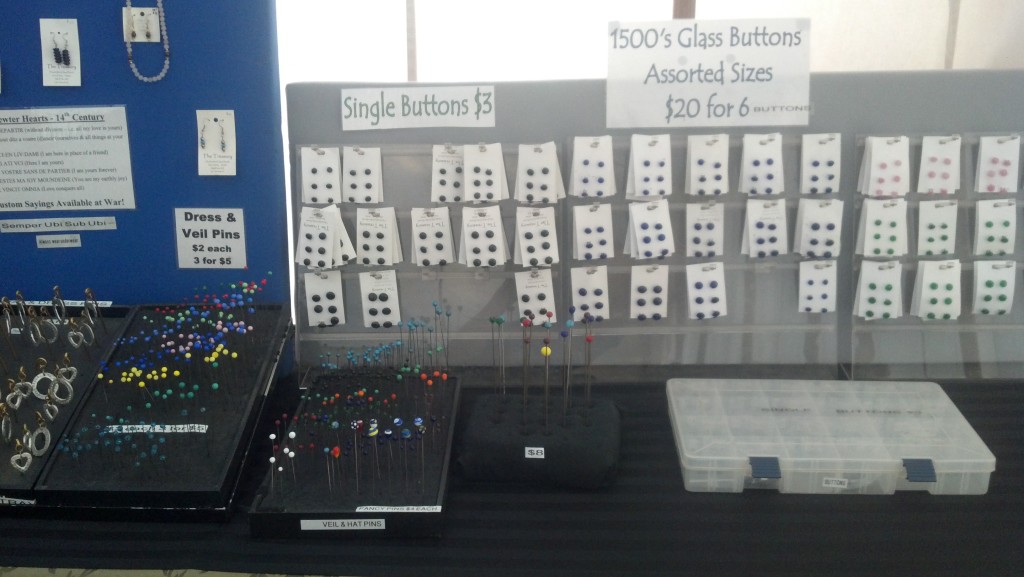A very important part of most craft show displays is your table. Some art displays do not use tables at all, relying instead in free-standing pedestals, but most beginning artists use tables for at least a part of their display. Tables are relatively inexpensive, and very available. But isn’t a table, just a table? Not really.
Consider the options that you have for your table: height, length, width, weight, and breakdown size. Tables really do come in an amazing selection of sizes and options. I have some old eight foot tables that are made of some sort of chipboard with a steel substructure and weigh almost as much as I do. I took those to a show once – just once. I was just starting up and I really needed to make do with what I owned. Aside from weighing way too much the old chip board tables will not survive any major contact with water – remember those discussions about protecting your products? Well, if you are doing outside shows you also need to consider whether rain, or even high humidity, will damage your displays, too. The large tables were also hard to pack because of their size.
So what do I use now? Folding plastic tables. They are impervious to water, relatively light, easy to carry and pack, and they come in a variety of styles. Most of them have a carrying handle to make moving them easier, and some of them even allow you to adjust how tall they are.
Many years ago I was fortunate enough to take a class on booth design from a very experienced business man. He understood how important the customer’s comfort was to keeping them interested in your booth; and a big part of comfort is table height. My original heavy tables were 28 1/2 inches tall, my card table is 28 inches tall, and my kitchen counter is almost 36 inches tall. Most tables were originally designed to sit at, but will your customers be sitting? Not usually. At most craft and art fairs the customers simply walk through your booth. So what height should your tables be? Generally between 32 and 38 inches tall. This makes it easy for the average person to view your items that are on the table without bending over. An added benefit is that the smallest children will have more difficulty reaching your items. While I would like to think that all parents are carefully monitoring their children, I know from experience that this is not the case. Taller tables keep the toddlers from getting into trouble quite as easily. Having to “instruct” someone’s child usually means that they will leave your booth in a huff, and taller tables help.
So what do we do if our tables do not have height adjustments? We raise them on risers! Whether you choose to use the furniture risers that are available at discount stores or something of your own construction, the tables need to be higher.
What do I use? Pipes! My original teacher did only indoor shows, so he recommended the use of pvc pipe risers to lift your tables. But exactly how do we do that? We’ll discuss that next time!

